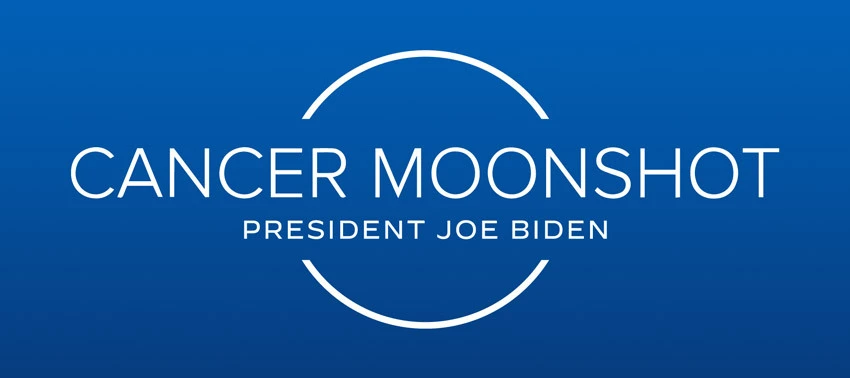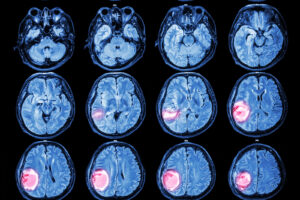In a milestone December 2022 webcast, the National Cancer Institute (NCI) described their plan for a multi-cancer early detection test — the first study in the agency’s Cancer Screening Research Network and an important part of the Beau Biden Cancer Moonshot Initiative. Cancer Moonshot was founded in 2016 following former President Barack Obama’s final State of the Union speech and aims to reduce cancer deaths by half within 25 years. The National Institutes of Health (NIH) has provided the initiative with $1.8 billion in funding.

The initial effort, a randomized controlled vanguard study, will assess the effectiveness of cancer screening in asymptomatic patients with mammography, colonoscopy and liquid biopsy (or assay) — the latter of which is a multi-cancer early detection method. Each method will be tested on 8,000 human participants.
Participants will be recruited for the trial from 10 to 15 hospitals and hospital systems. “These tools are a screen,” says Dr. Lori Minasian, referencing the methods listed above. “They don’t diagnose cancer. If it gives you a ‘yes’ answer, that means there is a signal that you may have cancer.” Minasian is a clinical oncologist and deputy director for the Division of Cancer Prevention at the NIH. The NIH hopes that smaller pilot studies like this will ultimately help them design a larger study to determine if early detection tests make a difference in reducing mortality, and have shared future plans of a randomized control trial of 225,000 patients.
An Important Part of the Plan
A lot is already riding on multi-cancer liquid assays, as President Joseph Biden described the possibility of “detecting many cancers at once through blood tests” as a “dream [now put] within our reach” in a speech on Feb. 2, 2022, which he summarized again in his Sept. 12, 2022 speech honoring the 60th Anniversary of President John F. Kennedy’s Moonshot Address.
But making the dream a reality hasn’t been easy. In November 2022, Elizabeth Holmes, founder of Theranos, Inc. was sentenced to prison for claiming technology she developed could screen people for diseases using only a comparatively minute amount of blood. In October 2020, the Centers for Medicare & Medicaid Services (CMS) distributed a national coverage determination (NCD) for tests that look for signs of colorectal cancer in the bloodstream, and proposed the agency would pay for assays that would alert providers to the possibility of colorectal cancer at least 74% of the time. However, the only blood-based test currently available, the Epi proColon test, did not meet the standard, as it had been found in one or more studies to produce false negatives more than half the time. (Medicare does cover ColoGuard, on the other hand, which the 2020 NCD described as “a multi-target sDNA colorectal cancer screening test.”)
And as cancer research into genetically targeted treatments has developed over the past eight years — dependent as it is on diagnostics that actually measure genes, potential cancer cells in the blood and other markers accurately — the U.S. government has not been able to dispel arguments that such cancer blood tests are entirely unregulated. (However, the FDA does regulate the laboratories who make them.) Scientists, scholars and public advocates alike note that a special pathway for licensing “companion diagnostics” is not used often enough, according to a 2016 article in the journal Public Health Genomics.
Efforts in Congress to pass legislation regulating these types of blood tests have been unsuccessful so far. Currently, many such personalized liquid assays are regulated as products of clinical laboratories. As the 2022 VALID Act (Verifying Accurate Leading-Edge IVCT Development Act) did not pass, FDA officials recently announced they would issue rules to finally regulate the field.
“We haven’t had a multi-cancer blood test,” says Minasian. “There are a wide variety of different assays that test for different things [to] detect cancer. Some measure circulating DNA, some mutations, while others look for RNA or other biomarkers.” Minasian says the NIH’s 20-plus years of research in cancer biology has resulted in increasingly effective cancer detection tools, but with “no understanding what to use right now in what context,” she says. “Each of these companies said we have this new assay that tests for four, five or 10 cancers — usually a different grouping of cancers. Our goal is to create a network of investigators so we can have the data to provide to physicians, patients and payors that we know how to use different technologies in different contexts,” says Minasian, who noted the organizers of the vanguard trial have not yet decided which assays to test.
A Multi-Pronged Research Effort
However, the vanguard study is only one prong of the Biden Administration’s multi-faceted approach to creating one multi-cancer early detection assay. “Seventy percent of cancer deaths are caused by cancers we don’t have a screening for,” says Jody Hoyos, MHA, CEO of the Prevent Cancer Foundation in Alexandria, Virginia. “There are only five routine screenings available right now: lung, colorectal, cervical, breast and prostate. Prevention is not a sexy topic. It’s not financially beneficial, so there are not a lot of companies pouring money into it,” she adds.
Seventy percent of cancer deaths are caused by cancers we don’t have a screening for.
Hoyos’ foundation is a member of the BLOODPAC Consortium, which was launched by President Obama in October 2016 to implement liquid biopsies in clinical settings. BLOODPAC’s membership involves academics, start-up companies and health officials — all as stakeholders. BLOODPAC is not the only group to come out of the cancer blood test arm of Cancer Moonshot. There is also the Liquid Biopsy Consortium, which is in its fifth year. “The mandate of this academic-industry partnership is that as technology is being developed, there needs to be an industrial partner,” says Professor David Wong, DMD, DMSc, the director of oral and head and neck oncology research at UCLA and the chair of the Liquid Biopsy Consortium.
Wong said the funded academic participants in the Consortium partner with university corporate spin-offs: Harvard’s Massachusetts General Hospital with a company called Exosome Diagnostics, Johns Hopkins University with Thrive, and Wong’s group at UCLA with Liquid Diagnostics. According to the NCI, the groups were divided into two teams, but Wong could not confirm that. “At least two of the groups in the consortium are looking for a non-blood-based liquid biopsy,” says Wong, noting that his own group at UCLA is researching the use of saliva or cerebrospinal fluid to detect lung, gastric, and head and neck cancers.
The carrot used to get the researchers to work together was government funding — Wong’s project was funded for $5 million. Another group, the Brain Liquid Biopsy Consortium, is trying to solve the biological problem of the brain-blood barrier, which some fear may prevent cells and other biological material (which could indicate the first arrival of deadly brain cancers) from leaking out into the general bloodstream, among other functions.
Future Disasters in the Industry
Despite advancements over the past decade in blood tests, genetics tests and other personalized assays, none have been subjected to the same rigorous requirements as biopharmaceutical drugs and devices to prove they are safe and effective before being made available for clinical use. But that was in flux even before the global pandemic, says Carmel Shachar, JD, MPH, executive director of the Petrie-Flom Center for Health Law Policy, Biotechnology and Bioethics at Harvard Law School.
“These laboratory-designed tests were regulated by a CMS structure which looked at lab practices. Is the lab doing good practices? Is the test doing what it says it’s doing? They look at [if] the lab [is] doing the test correctly, but they’re not looking at the clinical validity of the test,” Shachar says. “But there was a lot of regulatory ink spilled after the start of COVID-19, because as of December 2020, an at-home COVID kit does need FDA premarket approval.” Shachar notes a concern of self-collection kits is the greater potential for error, compared with tests administered by trained professionals. “Judging from those regulations, an at-home, laboratory-designed test would need FDA approval,” Schachar adds.
“The most remarkable example in the last couple of years was Theranos, which argued that their products fell under the laboratory-designed test rubric, and so managed to escape FDA oversight. Perhaps things could have been flagged earlier,” concluded Shachar.
John Otrompke, JD, is a bar applicant in New York City.







